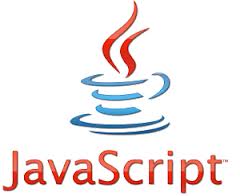
To become a web programmer, there are three things you must do:
- Learn the client side: HTML, CSS and Javascript.
- Pick a server side programming language (PHP, Ruby, Java etc) and learn it well.
- Build dynamic websites.
If any of the above terms is confusing for you, then you need to take a step back and learn some of the basics. If you are following a long so far … then read on for details.
If you just want to start learning PHP and JavaScript, check out my popular Complete Web Programmer video training package.
… OK, back to the article:
Learn the client side: HTML, CSS and Javascript
Before you can start building dynamic database driven websites, you need to know what is called the client-side: this is basically being able to create a standard web site using HTML, CSS and Javascript directly.
If your web design skills is limited to using Dreamweaver or some other web design program, and you don’t know HTML and CSS well … you will have to go back and learn that.
You don’t have to become an HTML and CSS guru and know every bit about it, but you should understand the basic principles of these languages and understand how to properly use them.

How about JavaScript?
Javascript is the programming/scripting language used in web browsers … meaning that Javascript is the programming language that actually runs in the web browser.
This is in contrast to server-side programming languages that run on the server … languages like PHP, Java and Ruby. Basically, the Javascript engine for processing Javascript code, is included in all web browsers, from Internet Explorer to Chrome to Firefox and the rest.
What does Javascript do?
Everything from form validation, screen animations to seamless server communication is accomplished with Javascript. If you’ve ever heard of AJAX or asynchronous communications … that is all done with Javascript.
If any of this is confusing for you, no worries, you will learn how Javascript is used in conjunction with the server, as you learn web programming. But you need to know a least a little Javascript to begin with.
Pick a server side programming language (PHP, Ruby etc) … and learn it well.
Server side programming languages are the languages that glue everything together … most of the time, this means connecting web pages to databases.
For example, you could use a server side language (like PHP, Java etc) to capture information people fill into web forms, and then insert that information into databases … then send that information back to the web pages again.
If you want to learn more about this, check out my classic article on database driven websites. Or, if you are excited and you want to learn the most popular server side programming language (PHP) …. then you can check out my beginners course on PHP.
Bottom line: you need to pick a language and learn it well. Your choice of language depends on a few factors:
- If you want to work for large companies or for small. If it is large companies you like, that means you need to get into Java and .Net. If you are more inclined to do your own thing or work for a startup, then PHP or Ruby would be a better choice.
- Your taste: some people prefer Ruby while others prefer PHP. For example, PHP is easier to learn (I would argue) than Ruby, Java or .NET, but PHP looks a little messy compared to the aforementioned languages.
- Your current skill level coming into this: if you are new to programming then PHP or Ruby would be a better choice over Java.
After you know one programming language and you are comfortable with it … it is time to learn another!
… I actually think it is a great idea to learn a few languages, because with each new language that you learn, your programming skills will just get that much better.
Build Dynamic Websites
The best way to learn, is to do. So as soon as you know the basics, start building dynamic websites as soon as possible. Start with small projects and work your way up.
In fact, I am such a big believer in project based learning, I put together an entire project based course package, that teaches you how to build a number of PHP based projects.
… You must know basic PHP first though.
I hope that helps,
Stefan Mischook
killerPHP.com




